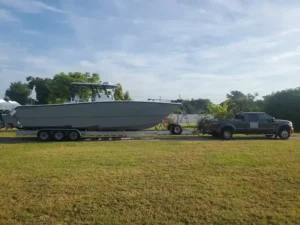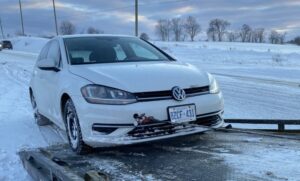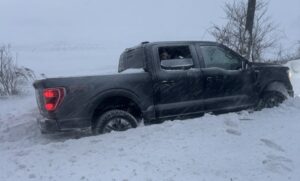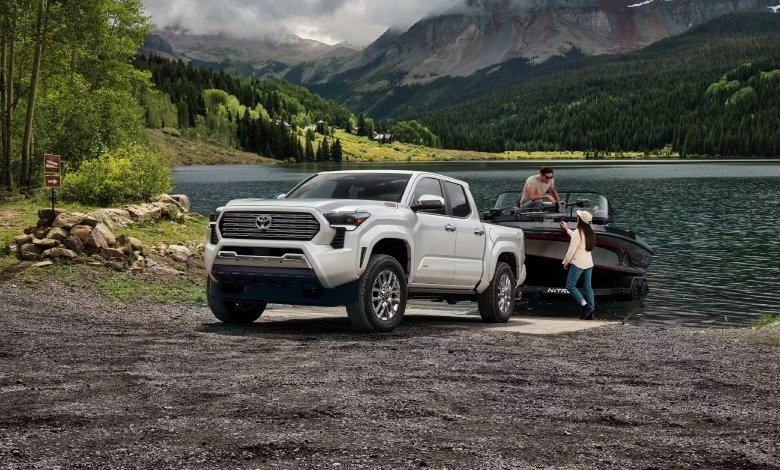The Toyota Tacoma has earned its reputation as the most capable and reliable midsize pickup on the market. From navigating the snowy backroads of Ontario to tackling rugged trails, the Tacoma is the truck of choice for drivers who demand dependability. But when it comes to the serious business of hauling a trailer, a boat, or a camper, understanding the precise limits of the Toyota Tacoma towing capacity is not just a recommendation—it is a critical safety requirement.
For our customers at Pars Towing in the Aurora area and across Greater Ontario, knowing your truck’s limits is the first step in avoiding a roadside emergency that requires our assistance. This comprehensive guide breaks down the Toyota Tacoma towing capacity by generation, engine, and trim, detailing the essential concepts like payload and tongue weight, and explaining the critical role of the factory Tow Package. By the end, you will know exactly what your Tacoma can safely handle, ensuring you stay on the road and out of a ditch.
- Learn More >>>> How do I get a tow truck?
I. Decoding the Maximum Toyota Tacoma Towing Capacity
The single number most drivers look for is the maximum towing capacity. However, this figure is a moving target, dependent on the truck’s configuration and the model year. The general rule is simple: the maximum Toyota Tacoma towing capacity is achieved with the V6 or the most powerful i-FORCE engine, in a specific two-wheel-drive (4×2) configuration, and when equipped with the factory tow package.
A. The Third Generation (2016-2023)
The third-generation Tacoma saw a major shift with the introduction of the 3.5-liter V6 engine, which solidified the truck’s towing credentials.
| Engine Configuration | Drivetrain | Maximum Towing Capacity (lbs) | Notes |
| 3.5L V6 (Atkinson Cycle) | 4×2 | Up to 6,800 lbs | Requires the V6 Tow Prep Package. This is the top figure for this generation. |
| 3.5L V6 (Atkinson Cycle) | 4×4 | Up to 6,500 lbs | The most common configuration for Ontario drivers. |
| 2.7L 4-Cylinder | 4×2 or 4×4 | Up to 3,500 lbs | This capacity is more suitable for light utility trailers or small boats. |
B. The Fourth Generation (2024 and Newer)
The redesigned fourth-generation Tacoma introduced a new turbocharged engine lineup, which slightly adjusted the towing profile across the board.
| Engine Configuration | Drivetrain | Maximum Towing Capacity (lbs) | Notes |
| 2.4L i-FORCE Turbo Gas | 4×2 or 4×4 | Up to 6,500 lbs | This is the maximum available capacity in the new generation, often achieved in XtraCab and SR5 trims. |
| 2.4L i-FORCE MAX Hybrid | 4×4 | Up to 6,000 lbs | The hybrid powertrain offers massive torque but sees a slightly lower maximum towing capacity due to increased vehicle curb weight. |
It is crucial to note that the highest number for a given year is almost always a theoretical maximum achieved by the leanest truck in the lineup. For the average driver in Aurora with a 4×4 Double Cab, the real-world limit is closer to 6,000–6,500 lbs. Always consult the specific numbers on the sticker inside your driver-side door jamb or your owner’s manual.
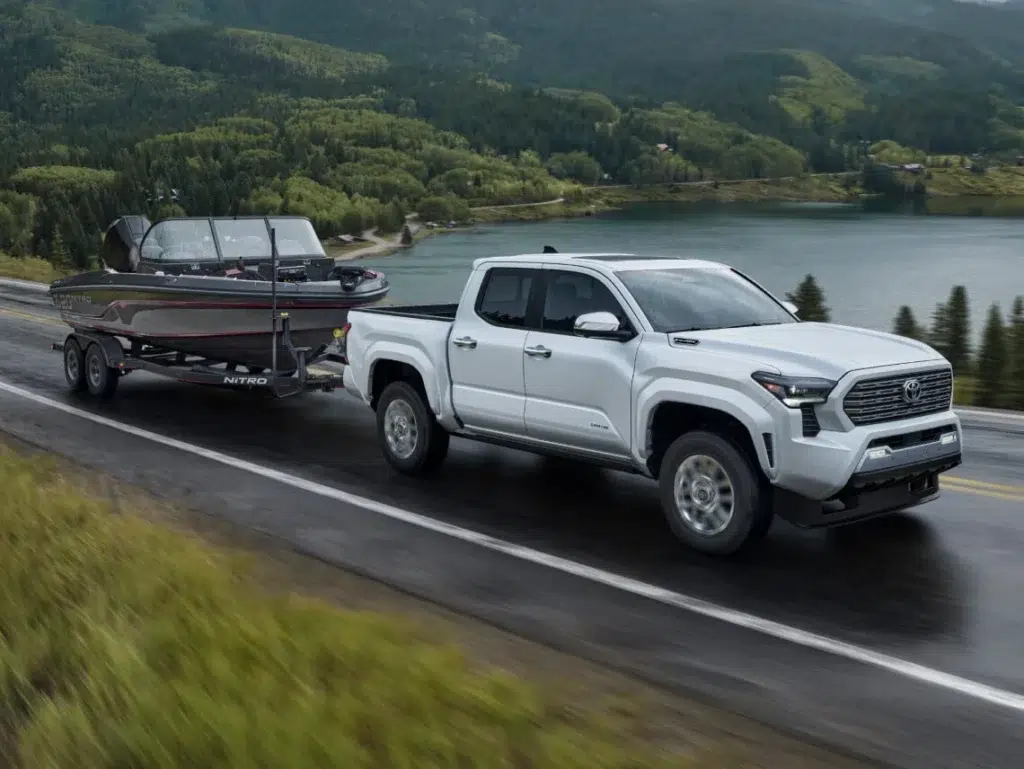
- Learn More >>>>V8 Towing Drag Race: Ford vs Chevy vs Ram
II. The Essential Tow Package: The Key to Maximum Capacity
A Tacoma cannot reach its full towing potential without being “properly equipped.” This phrase refers to the factory-installed Tow Package, which is essential equipment that upgrades key vehicle systems to handle the heat and stress of hauling.
A. Core Components of the Tow Package
For both the third and fourth-generation Tacomas, the tow package typically includes:
- Class-IV Towing Hitch Receiver: This is the strong, frame-mounted piece required to connect the trailer.
- 4/7-Pin Connector: These wiring harnesses allow the truck to power the trailer’s brake, running, and signal lights. The 7-pin connector is necessary for trailers with electronic brakes.
- Upgraded Cooling: A transmission cooler and often an enhanced engine oil cooler are included. Towing generates tremendous heat, and auxiliary cooling is the most critical feature to prevent premature transmission failure.
- Trailer-Sway Control (TSC): This safety system uses the vehicle’s stability control sensors to detect trailer sway. It then automatically applies brake pressure to individual wheels and/or reduces engine torque to help bring the trailer back in line.
B. Modern Towing Technology
Newer models, particularly the 2024+ generation, integrate advanced features that enhance both safety and convenience, making the towing experience easier for weekend warriors and commercial users alike:
- Integrated Trailer Brake Controller: This allows the driver to adjust and activate the trailer’s brakes from the driver’s seat, which is non-negotiable for safe towing of any substantial load.
- Trailer Backup Guide with Straight Path Assist: A revolutionary feature that makes backing up a trailer much less stressful by using the truck’s technology to help steer the trailer in the desired direction.
- Blind Spot Monitor (BSM) with Trailer Detection: This system extends the truck’s blind spot detection area to cover the full length of the trailer, a major safety boost when changing lanes on busy Ontario highways.
- Learn More >>>>Towing a Ford Mustang Mach-E!
III. The Three Golden Rules of Towing: Weight Terms Explained
The single greatest mistake a new tower makes is only looking at the maximum towing capacity. Safe towing requires a deep understanding of three interconnected weight concepts. Failing to respect any one of these limits can be catastrophic, leading to a breakdown that requires an expensive flatbed service from Pars Towing to resolve.
A. 1. Towing Capacity (Maximum Weight to Pull)
This is the manufacturer’s rating of the maximum weight the vehicle can pull. It is determined by the strength of the chassis, the power of the engine, the capability of the transmission, and the capacity of the cooling and braking systems.
- The Load: This includes the total weight of the trailer and everything inside it (the Gross Trailer Weight or GTW).
- The Rule: Never, under any circumstances, exceed the stated maximum towing capacity for your specific truck.
B. 2. Payload Capacity (Maximum Weight to Carry)
Payload capacity is the maximum total weight that can be safely placed inside the truck. This includes:
- The driver and all passengers.
- All cargo in the cab and the truck bed.
- The crucial factor: The trailer’s tongue weight (see below).
Payload is often the first weight limit a driver exceeds, especially when towing. Your truck’s specific payload capacity is listed on the tire and loading information placard, typically found on the driver’s side door jamb.
- The Tacoma Payload: Payload capacity for the modern Tacoma typically ranges from about 1,100 lbs (on heavier 4×4 trims) to over 1,700 lbs (on lighter 4×2 trims).
C. 3. Tongue Weight (Downward Force on the Hitch)
Tongue weight (TW) is the most overlooked and most critical factor for safe towing stability. It is the downward force the trailer hitch applies to the truck’s hitch receiver.
- The Ideal Ratio: For safe and stable towing, the tongue weight must be between 10% and 15% of the total loaded trailer weight (GTW).
- The Calculation: If you have a trailer with a GTW of 6,000 lbs, your tongue weight must be between 600 lbs and 900 lbs.
- The Connection to Payload: This tongue weight is considered part of your truck’s payload. If your truck has a payload limit of 1,200 lbs, and the tongue weight of your trailer is 700 lbs, you only have 500 lbs remaining for the driver, passengers, and gear inside the cab or bed.
Failure to maintain the correct tongue weight will result in:
- Too Little Tongue Weight: The trailer will sway wildly at speed, creating a hazardous, uncontrollable situation.
- Too Much Tongue Weight: The rear axle is overloaded, causing the front steering wheels to lift, severely reducing steering control and braking efficiency.
- Learn More >>>>BEST cars for towing 2025!
IV. What Can a Toyota Tacoma Safely Tow?
Considering the realistic maximum Toyota Tacoma towing capacity is often around 6,000–6,500 lbs for a properly equipped 4×4 V6 model, here is what that translates to for the average consumer in Ontario:
A. Boats and Watercraft
The Tacoma is an excellent platform for towing most common recreational boats found on Georgian Bay, Lake Simcoe, or the Kawarthas.
- Bass Boats and Ski Boats: Most aluminum fishing boats and midsize fiberglass ski boats fall well within the 3,000–4,500 lb range.
- Larger Deck Boats: Some larger, heavier deck boats may push the 6,000 lb limit, so checking the fully loaded boat and trailer weight is non-negotiable.
B. Travel Trailers and Campers
This is where drivers often get into trouble. The listed “dry weight” of a travel trailer is often misleading. The key is the fully loaded Gross Vehicle Weight Rating (GVWR) of the trailer.
- Pop-Up Campers: Easily towed by even the 4-cylinder Tacoma (under 3,000 lbs GVWR).
- Small Hard-Sided Travel Trailers (Teardrops, Small Hybrids): Most fall safely in the 3,000–4,500 lb range, making them ideal for the Tacoma.
- Mid-Size Travel Trailers: Trailers with a GVWR above 6,000 lbs (often single-axle 20-foot or dual-axle 25-foot models) are generally too large for the Tacoma. Even if the weight is close to 6,500 lbs, you must factor in the weight of passengers and gear (the payload) before you are safe.
C. Utility and Enclosed Trailers
For contractors or homeowners in Aurora, the Tacoma is perfectly capable of handling:
- Single-Axle Utility Trailers: Easily haul materials, dirt bikes, or ATVs (typically under 2,000 lbs).
- Small Enclosed Cargo Trailers: A 6×10 or 7×12 enclosed trailer is manageable, but remember that a fully loaded 7×14 tandem axle enclosed trailer can easily weigh over 5,000 lbs.
V. Safe Towing Practices: Advice from Pars Towing
Even with the best truck, poor practices can lead to an emergency. As a local towing service, Pars Towing has seen firsthand what happens when drivers ignore the rules of the road—or the laws of physics.
- Use the 80% Rule: Never tow at your maximum stated capacity. To account for variables like hills, wind, and braking reserves, limit your fully loaded trailer weight to no more than 80% of your truck’s maximum rating. For a 6,500 lb maximum Toyota Tacoma towing capacity, your safe limit is about 5,200 lbs.
- Distribute the Load Properly: When loading your trailer, ensure the heaviest items are placed low and centered over the trailer axles to maintain stability and the correct tongue weight.
- Check All Fluids and Tires: Before every tow, check the truck and trailer tire pressures (adjusting to the load), check the engine oil, and check the transmission fluid. Towing puts immense strain on the drivetrain.
- Engage Tow/Haul Mode: If your Tacoma has a Tow/Haul mode, use it. This feature changes the transmission’s shift points to avoid “hunting” for gears on hills and increases engine braking to help slow the load without excessive brake wear.
- Increase Braking Distance: Due to the added momentum of a trailer, your stopping distance is significantly increased. Drive cautiously, anticipate traffic, and leave double the following distance you normally would.
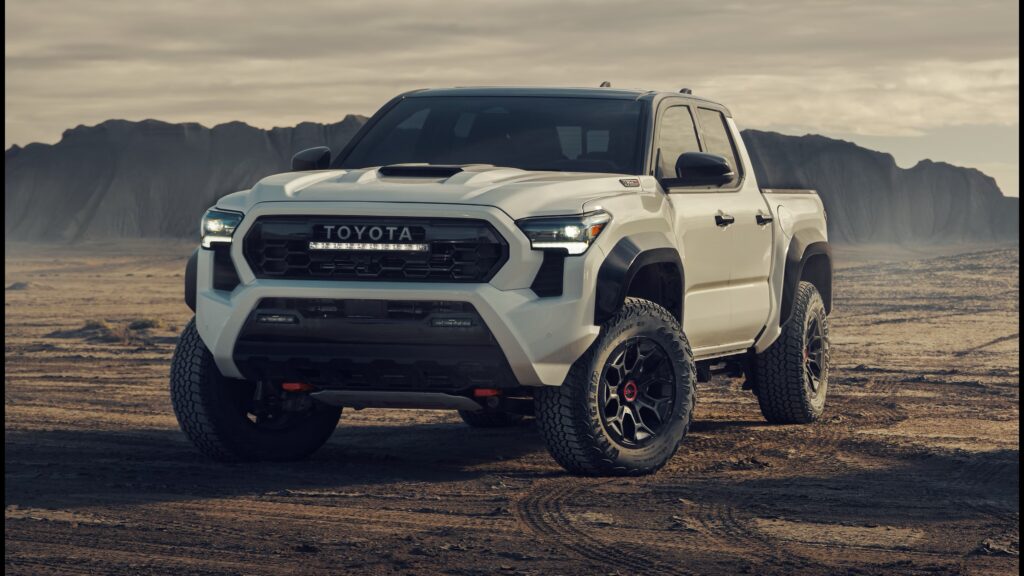
- Learn More >>>>Heavy Duty Towing oshawa
VI. Conclusion: Know Your Limits, Stay on the Road
The Toyota Tacoma is a legendary truck, perfectly engineered to handle a significant amount of towing and hauling. Its impressive capabilities, especially when properly equipped with the factory tow package and the powerful V6 or i-FORCE engine, make it the ideal companion for weekend adventures and work tasks throughout Ontario.
However, the responsibility for safe towing rests entirely with the driver. The maximum Toyota Tacoma towing capacity is not a suggestion—it is an absolute limit set by the manufacturer to ensure the safety and longevity of your vehicle.
Before you hitch up your trailer, remember the three crucial weight numbers:
- Towing Capacity: How much you can pull (Gross Trailer Weight).
- Payload Capacity: How much you can carry (Passengers + Cargo + Tongue Weight).
- Tongue Weight: The downward force (must be 10% to 15% of the trailer weight).
By respecting these limits and utilizing the modern towing technologies built into your Tacoma, you will enjoy thousands of miles of safe, stress-free towing. Should you ever encounter a situation in the Aurora area—whether it is an overheated brake or a minor roadside issue while towing—remember that Pars Towing is always ready with the heavy-duty service and flatbed equipment to get you and your valuable cargo to safety.

